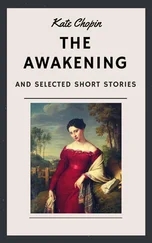Keith Grainger - Wine Faults and Flaws
Здесь есть возможность читать онлайн «Keith Grainger - Wine Faults and Flaws» — ознакомительный отрывок электронной книги совершенно бесплатно, а после прочтения отрывка купить полную версию. В некоторых случаях можно слушать аудио, скачать через торрент в формате fb2 и присутствует краткое содержание. Жанр: unrecognised, на английском языке. Описание произведения, (предисловие) а так же отзывы посетителей доступны на портале библиотеки ЛибКат.
- Название:Wine Faults and Flaws
- Автор:
- Жанр:
- Год:неизвестен
- ISBN:нет данных
- Рейтинг книги:4 / 5. Голосов: 1
-
Избранное:Добавить в избранное
- Отзывы:
-
Ваша оценка:
- 80
- 1
- 2
- 3
- 4
- 5
Wine Faults and Flaws: краткое содержание, описание и аннотация
Предлагаем к чтению аннотацию, описание, краткое содержание или предисловие (зависит от того, что написал сам автор книги «Wine Faults and Flaws»). Если вы не нашли необходимую информацию о книге — напишите в комментариях, мы постараемся отыскать её.
FLAWS
Wine Faults and Flaws: A Practical Guide
An essential guide to the faults and flaws that can affect wine
Wine Faults and Flaws — читать онлайн ознакомительный отрывок
Ниже представлен текст книги, разбитый по страницам. Система сохранения места последней прочитанной страницы, позволяет с удобством читать онлайн бесплатно книгу «Wine Faults and Flaws», без необходимости каждый раз заново искать на чём Вы остановились. Поставьте закладку, и сможете в любой момент перейти на страницу, на которой закончили чтение.
Интервал:
Закладка:
Some of the information in this chapter is based upon content from Wine Production and Quality 2nd edn. by Keith Grainger and Hazel Tattersall [3]. This material has been revised and expanded. Many additional topics related to wine tasting are discussed in further detail in that work.
Every wine drinker is, to a greater or lesser extent, a wine taster. However, most wine consumers taste and drink the product without much thought other than whether or not it is enjoyable and meets their expectations. The wine lover gives the wine a more detailed appraisal and considers balance, complexity, and typicality (in the wine world very often referred to as tipicité ). Neither is looking to find a fault, although if present, it may scream out and prohibit all enjoyment of the wine. The trade student, oenologist, winemaking consultant, or quality control manager have a much more detailed agenda in their tasting assessments and will follow a consistent and rigorous structure. The detection of any fault or flaw is an essential part of such tasting analysis.
The selection of tasters, for making professional judgements will encompass many criteria, including expertise in the types of wines to be assessed. There is an International Organisation for Standardization (ISO) standard for such selection: ISO 8586/2012: General guidelines for the selection, training, and monitoring of selected assessors and expert sensory assessors [4]. This standard is under review at the time of writing and is due to be replaced by ISO/CD 8586. ISO 8586/2012 defines expert sensory assessors as ‘selected assessors with a demonstrated sensory sensitivity and with considerable training and experience in sensory testing, who can make consistent and repeatable sensory assessments…..’ Key to an individual's suitability is being able to perform with precise accuracy and, crucially, reproducibility. Of course, a long‐term sensory memory is essential to make reliable comparative judgements.
2.2 Anosimics, Fatigue Effect, and Supertasters
2.2.1 Anosmics and Fatigue Effect
An anosmic has no sense of smell, and somebody with this condition is sadly precluded from being a capable wine taster. However, even amongst wine lovers and professionals, some people are specific anosmics, i.e. lacking the ability to detect one or more individual odorants. Further, tasters can become victims of fatigue or the adaption effect. When regularly or continuously exposed to particular odours, the sensitivity to them is reduced, sometimes completely lost. Professional tasters should be regularly monitored to ensure they remain sensitive to odorants commonly found in wines, and in particular, to fault compounds.
2.2.2 Supertasters
Some people have tongues with a high density of fungiform papillae and other papillae, which contain the taste buds, making them particularly sensitive to bitter sensations. This is probably on account of genetics. The psychologist Linda Bartoshuk, formerly of Yale University and latterly Presidential Endowed Professor at the University of Florida, defines these people, who perhaps comprise 25% of the population, as ‘supertasters’. The work done by Ann Noble, the inventor of the ‘wine aroma wheel’, at UC Davis also established that there are no ‘supertasters in general’. An individual who is a supertaster with one bitter compound, e.g. naringin(e), might be a non‐taster with another, e.g. 6‐ N ‐propylthiouracil (PROP), or caffeine. It should be noted that supertasters do not necessarily make the best wine tasters, for the intense sensations they perceive from bitterness and astringency, impacts on other sensations and perceptions of the balance of a wine.
2.3 Tasting Conditions, Equipment, and Glassware
2.3.1 The Tasting Room
For any detailed and professional assessment, and particularly when checking for faults and flaws, it is important to taste in suitable conditions. The ideal tasting room will have the following characteristics:
Large: Plenty of room is necessary to give the taster his or her personal space and help concentrate on the tasting;
Light: Good daylight is ideal, and the room (if situated in the northern hemisphere) should have large, north‐facing windows. If artificial light is required, the tubes/bulbs should be colour‐corrected so that the true appearance of the wines may be ascertained;
White tables/surfaces: Holding the glasses over a white background is necessary to assess the appearance and show the true colour and depth of colour of the wine, uncorrupted by surrounding surfaces;
Free from distractions: Extraneous noises are undesirable, and smells can severely impact on the perceived nose of the wines. Tasting rooms should be sited away from the winery, avoiding all the smells of the vat room and cellar, together with kitchens and restaurants. This is vital that when tasting wines for suspected faults, as ambient odours will have a severe impact on the assessment process and sensory detection thresholds. There is no doubt that building materials, decorations, furnishings, and people all exude odours. Indeed, identical wines can be perceived differently according to the surroundings in which they are assessed. Tasters should avoid wearing aftershaves or perfumes, and smoking should not take place in the vicinity;
Sinks and spittoons: Spittoons, regularly emptied, are essential (see Section 2.3.2.4) and sinks for emptying and rinsing glasses are desirable.
There is an ISO standard for the design of tasting rooms: ISO 8589:2007 Sensory analysis – General guidance for the design of test rooms [5].
2.3.2 Appropriate Equipment
Having appropriate equipment for the tasting is most important. This includes an adequate supply of tasting glasses, water, spittoons, tasting sheets for recording notes, and, at a formal sit‐down session, tasting mats.
2.3.2.1 Tasting Glasses
It is important to taste wines using appropriate glasses. Experts do not universally agree as to the detailed design of the ideal tasting glass, but certain criteria are essential. Two of the key characteristics are:
Fine rim: A fine rim glass will roll the wine over the tip of the tongue, whilst an inexpensive glass with a beaded rim will throw the wine more to the centre. The tip of the tongue is the part of the mouth where we most detect sweetness, with other parts of the tongue being less sensitive to this;
Cup tapering inwards: The cup of the glass must taper inwards towards the top. This will develop, concentrate, and retain the nose of the wine in the headspace above the liquid, and also facilitate tilting the glass and swirling the wine. Cut glass is not appropriate for wine tasting, as it is impossible to ascertain the true depth of colour and brightness.
Glasses manufactured to the ISO tasting glass specification ISO 3591:1977 [6] remain popular among many wine tasters, both professional and amateur. The ISO tasting glass is particularly good at revealing those faults perceptible on the nose. The International Organisation of Vine and Wine (OIV) recommends the use of tasting glasses that comply with the requirements of ISO 3591, and that glasses are rinsed in ultra‐filtered and deionised water [7]. Whether ISO glasses are the best glass for tasting particular wine types is subject to much dispute. The nose of full‐bodied and complex red wines certainly develops more in a larger glass. Wine glass manufacturers, particularly Riedel and Zwiesel , have designs to bring out the best of individual wine types, so perhaps the only real advantage of the ISO glass is that it is a standard reference.
An appropriate tasting sample is 3–4 cl, which will be sufficient for two or three tastes. Pouring 5 cl into the glasses allows tasters to return for further assessment should this be required. If glasses of a larger size than the standard ISO tasting glass are used, it is appropriate to pour correspondingly more wine.
Читать дальшеИнтервал:
Закладка:
Похожие книги на «Wine Faults and Flaws»
Представляем Вашему вниманию похожие книги на «Wine Faults and Flaws» списком для выбора. Мы отобрали схожую по названию и смыслу литературу в надежде предоставить читателям больше вариантов отыскать новые, интересные, ещё непрочитанные произведения.
Обсуждение, отзывы о книге «Wine Faults and Flaws» и просто собственные мнения читателей. Оставьте ваши комментарии, напишите, что Вы думаете о произведении, его смысле или главных героях. Укажите что конкретно понравилось, а что нет, и почему Вы так считаете.












